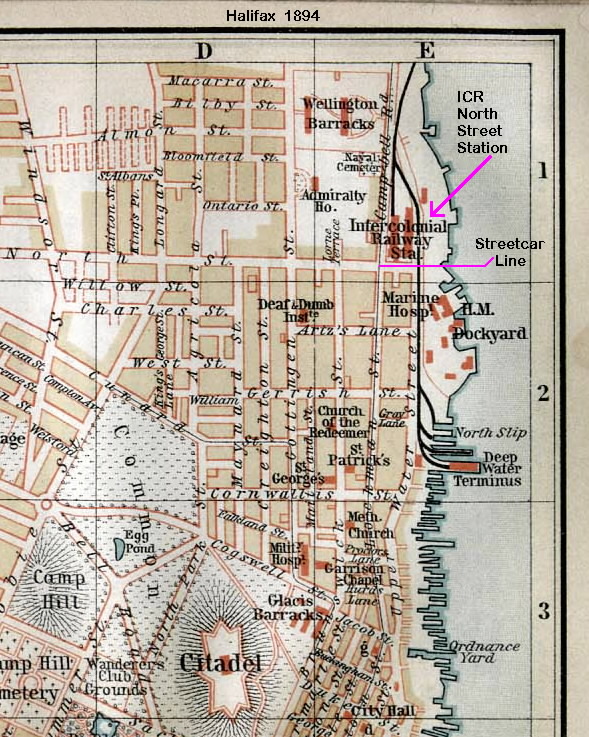ICS comments (written 5 July 2000):
Obviously, the planning and work required for the change of gauge was begun well before this agreement was signed on 20 June 1875 — just ten days before the work had to be completed. Changing the gauge of a railway is a complex, expensive, and time-consuming project, requiring careful planning and competent management. There can be no doubt that this project was pretty far along in preparations by the time the legal agreement was signed.
This agreement gives us a clear idea of the rolling stock in service on the Windsor and Annapolis Railway at this time: 9 locomotives, 14 passenger cars, and 145 freight cars — box cars, flat cars, gondola cars, vans (cabooses cabeese?) and other miscellaneous types. The six "converted" locomotives were originally manufactured as broad-gauge engines, and were converted to standard gauge by fitting new slightly-shorter axles (probably re-using the original driving wheels) and adjusting the position of the cylinders to match; the frames, boilers, fireboxes, cabs and controls, etc., were unaffected. (This conversion would have been considerably simplified if these locomotives had been specified, at the time of original purchase, to be designed with a view to later conversion to standard gauge — I don't know if this was done, but the need for eventual conversion to the "standard" or Stephenson gauge had been clear for years before the change was carried out.)
According to Benjamin Russell's book, after the successful change of gauge on the night of June 30 - July 1, 1875, the Windsor and Annapolis Railway Company continued to operate the Windsor Branch and paid the rent as set out in the agreement, "until the 1st August 1877, when the Superintendent of the Government Railways, without the consent of the Windsor and Annapolis Railway Company and against their will, took forcible possession of the Windsor Branch and removed the Company's trains therefrom, and prevented them from using the said Branch ... and from running any train thereon, and the Windsor Branch ... continued to be operated by the said Superintendent and his subordinates until the 24th September 1877, when the Windsor Branch was formally transferred to the Western Counties Railway Company, who took possession and (as of March 11th, 1878) continue to hold and operate it..." On October 9th, 1877, an attempt was made by the Windsor and Annapolis Railway Company to run an engine from Windsor towards Windsor Junction, but they were forcibly prevented from doing so by the Western Counties Railway Company.
In July 2000, the Windsor Branch remains in daily use for freight trains. It is owned by Canadian National Railway, but is leased, maintained, and operated by the Windsor and Hantsport Railway Company. This is the railway track that runs from Windsor through Three Mile Plains, Ellershouse, Mount Uniacke, South Uniacke, and Beaver Bank, to Windsor Junction.
|

